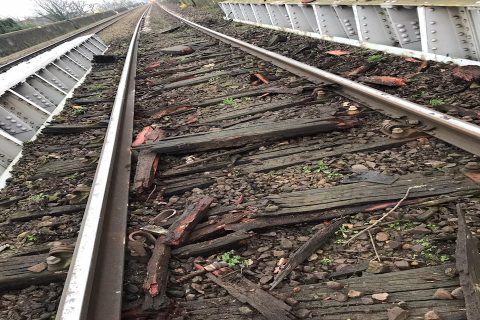
Damage London derailment will take weeks to repair
Network Rail estimates that it could take several weeks to restore services on a crucial north London line, after a derailed freight train badly damaged 2.5 miles (4km) of track and lineside equipment. Over 6000 sleepers will need replacement in what is shaping up to be a significant engineering headache.
Bridge bashing is usually the preserve of errant lorry drivers, but ten structures were among the casualties in a serious derailment on the Barking to Gospel Oak line in the north of London on Thursday morning (23 January).
Eye witness
Unconfirmed eye witness reports from social media say a diesel hauled westbound freight train derailed around the Walthamstow neighbourhood, and dragged at least part of its consist for a distance of two and a half miles, wrecking the tracks and lineside equipment, and damaging ten bridges into the bargain.
UK’s infrastructure manager Network Rail confirmed the accident, stating that just after 6 in the morning of Thursday 23 January, a freight wagon derailed between Leyton Midland Road and Walthamstow Queens Road stations on the Barking to Gospel Oak line, a very busy mixed use line in the north of London.
Round the clock
The official statement added that the derailment had caused extensive damage over a two and a half mile stretch with a number of sleepers completely split in half. According to the company, ten bridges – a figure first thought to be eight – were damaged along with signalling and other operational lineside equipment.
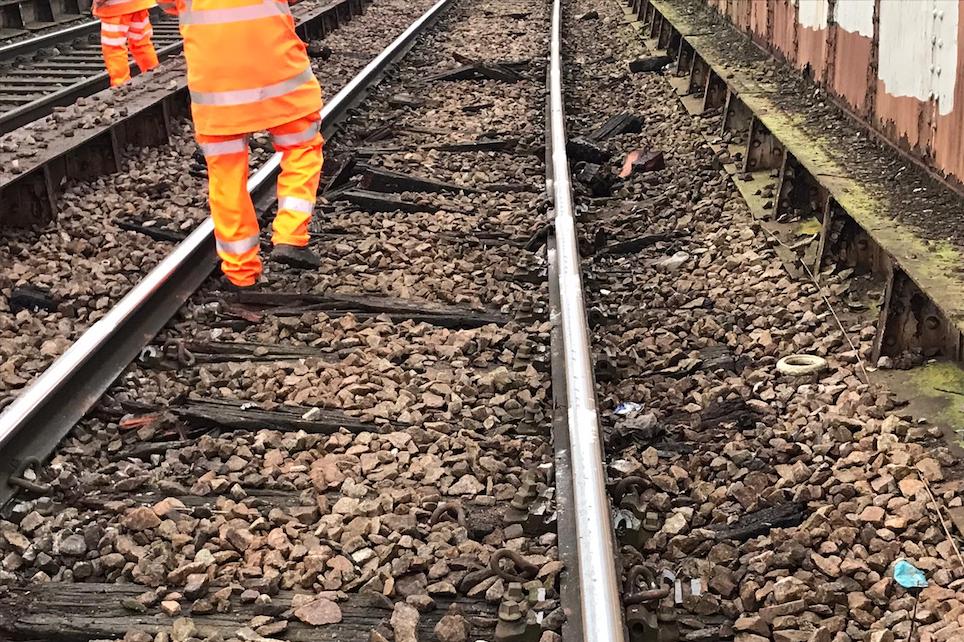
Ellie Burrows, Network Rail route director for Anglia sympathised with rail users. “Our engineers will be working around the clock to get the line open as quickly as possible. I also want to thank our lineside neighbours for their patience while we carry out this important work and we will aim to keep disruption to a minimum”.
Repairs by the numbers
Network Rail has made no comment on the causes of the incident itself, on the grounds of an ongoing investigation. They have however assessed the damage, and say that in addition to repairing the ten bridges; they will need to replace 39 lengths of rail at 216 metres each; 5,300 concrete sleepers and 900 wooden ones; and handle 10,000 tonnes of ballast.
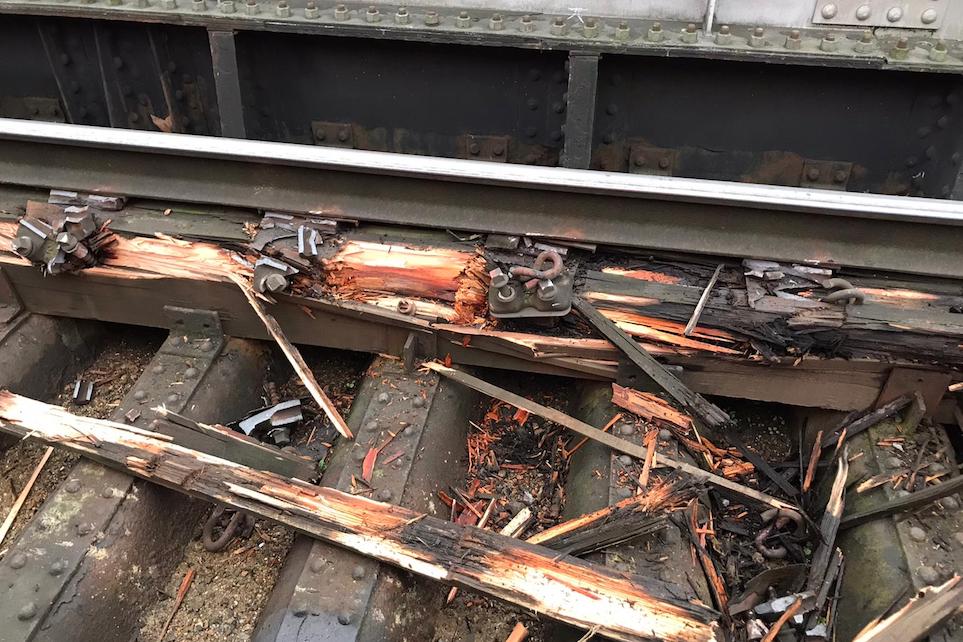
A statement to the press said that a full schedule of repairs is still being finalised but the complex work programme is expected to take a number of weeks with the line part-suspended.
Silk Road to Stratford affected
After being run down in the later decades of the twentieth century, the Barking – Gospel Oak line has seen a renaissance in the last five years, following an extensive upgrade as a critical mixed-use route – part of the orbital route around north London – providing connections to all the main radial routes out of the capital. The heavily used commuter route, serves resurgent areas around London’s East End, Olympic Park and Stratford, with multiple interchanges to other parts of the London transport system.
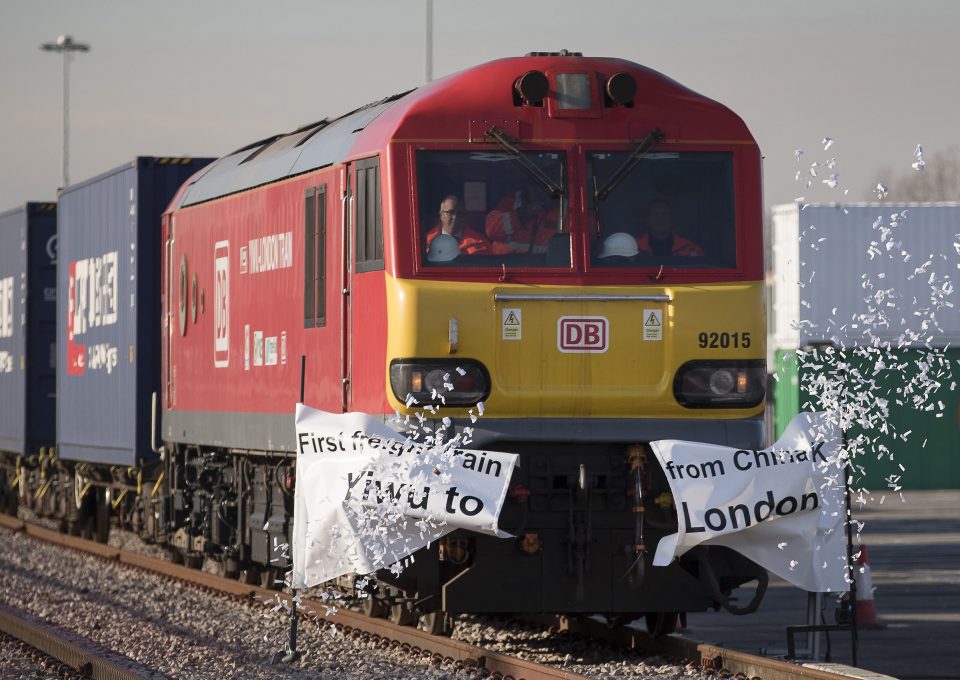
In addition to those frequent passenger services on London Overground, there are four hourly freight paths, with DB Cargo, GB Railfreight and Freightliner among the regular users. Silk Road traffic via the Channel Tunnel also use the route. Replacement buses are in place for commuters, but that may not be the solution for freight operators.
Also read:


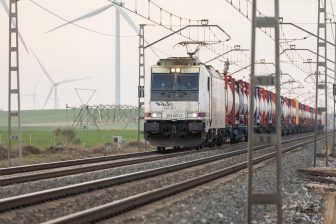
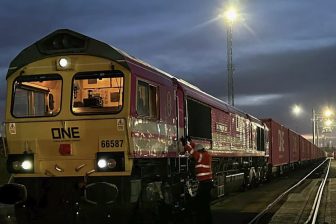

So none of these routes have alternative routes or diversions?
One freight train derailment wrecking track and disrupting train services for weeks is bad enough, but two may be more than just an unfortunate coincidence. We’ll have to wait for the accident reports to see if there are any common factors in the Walthamstow and Eastleigh incidents. Poor track, poorly maintained rolling stock or over-loaded wagons? One hopes the containers in the Eastleigh train will be weighed – overweight ‘boxes’ are a major problem in the shipping industry.